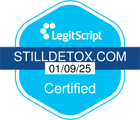What Is M2A4 Pill? Identifying the Medication
The M2A4 pill is a white, oblong tablet marked with the imprint M2A4 57344, containing 500 mg of acetaminophen. Acetaminophen, also known as paracetamol, is an over-the-counter analgesic and antipyretic, not a controlled substance under the DEA.
It’s widely used for mild to moderate pain—headaches, muscle aches, arthritis—and fever reduction.
A 2021 Pain and Therapy review estimates acetaminophen’s use in over 600 million doses annually in the U.S. alone, reflecting its ubiquity.
How Does M2A4 Work? Purpose and Effects
Acetaminophen in the M2A4 pill works primarily in the central nervous system, inhibiting prostaglandin synthesis by targeting COX enzymes, reducing pain and fever signals. Unlike opioids or NSAIDs, it doesn’t bind to opioid receptors or reduce inflammation significantly.
M2A4 effects kick in within 30-60 minutes, lasting 4-6 hours, with a half-life of 1-4 hours.
A 2019 Journal of Clinical Pharmacology study notes its efficacy for acute pain, though its exact mechanism remains partly unclear.
What is M2A4 pill’s function? At Still Detox, we see it as a go-to for temporary relief, but we stress its limits—patients need guidance to use it safely without over-reliance.
What Are the Risks of M2A4 Pill?
While the M2A4 pill isn’t addictive, misuse poses real threats. Exceeding 4,000 mg daily risks severe liver damage, a leading cause of acute liver failure—over 26,000 hospitalizations yearly, per a 2020 Hepatology study.
Overdose symptoms (nausea, confusion, jaundice) can escalate fast, especially with alcohol or other liver-stressing drugs. Rare allergic reactions—rash, swelling—also occur.
The FDA warns of its presence in many combo meds, raising accidental overdose odds.
Support at Still Detox: Managing M2A4 Use
Though not addictive, patients sometimes over-rely on it, complicating other addictions—like alcohol or opioids—which we treat with medical detox and tapering if needed. Therapy (Cognitive Behavioral Therapy, group support) addresses pain management alternatives, while education prevents misuse. A 2018 Drug and Alcohol Dependence study shows supervised reduction cuts overdose risk by 40%.
Holistic care—nutrition, exercise—supports overall recovery.
We will help you with your addiction and support your recovery, we are just a call away. (561) 556-2677








